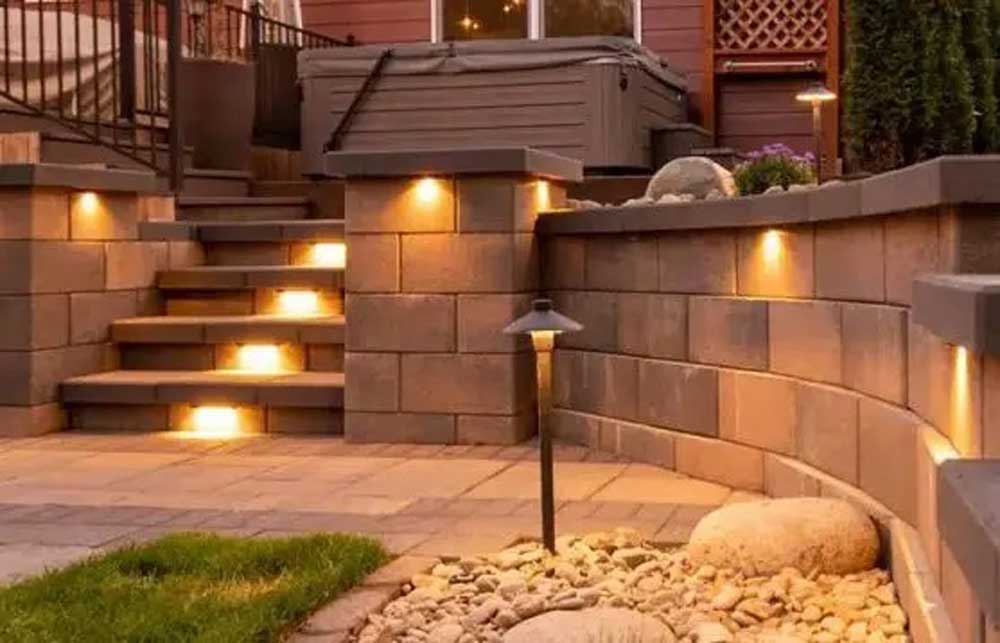The term hardscape encompasses features such as pathways, concrete pads, stairways, walls, garden walls, columns, piers, pedestals, and pool hardscape. These hardscapes come to life with proper lighting while providing safety and security.
Below are tips and techniques for hardscape lighting. Scroll on.
Hardscape Lighting Techniques
- Downlighting: Downlighting from under eaves, facades or trees can simplify navigating different hardscape levels.
- Uplighting: Using upwards-facing lights installed at ground level enhances walls and columns from below. Grazing stone or brick walls bring out their textures and patterns. Wall washing softens the details; great for lighting smooth concrete walls, bringing out their color.
- In-ground lights are uplights installed flush to the ground to mark pathways and uplight walls and columns.
- Paver lights are recessed into a paved surface to mark the route while spilling light on the walking surface.


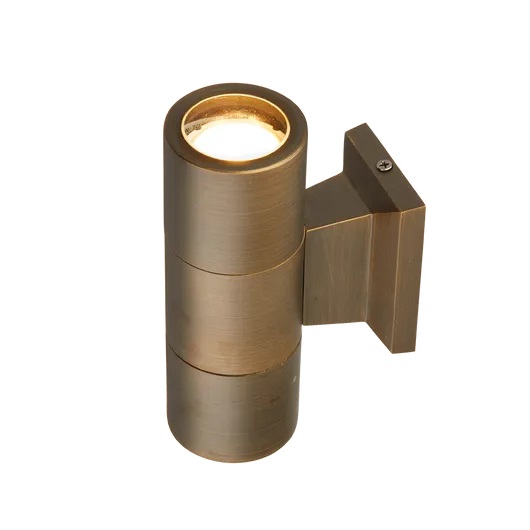
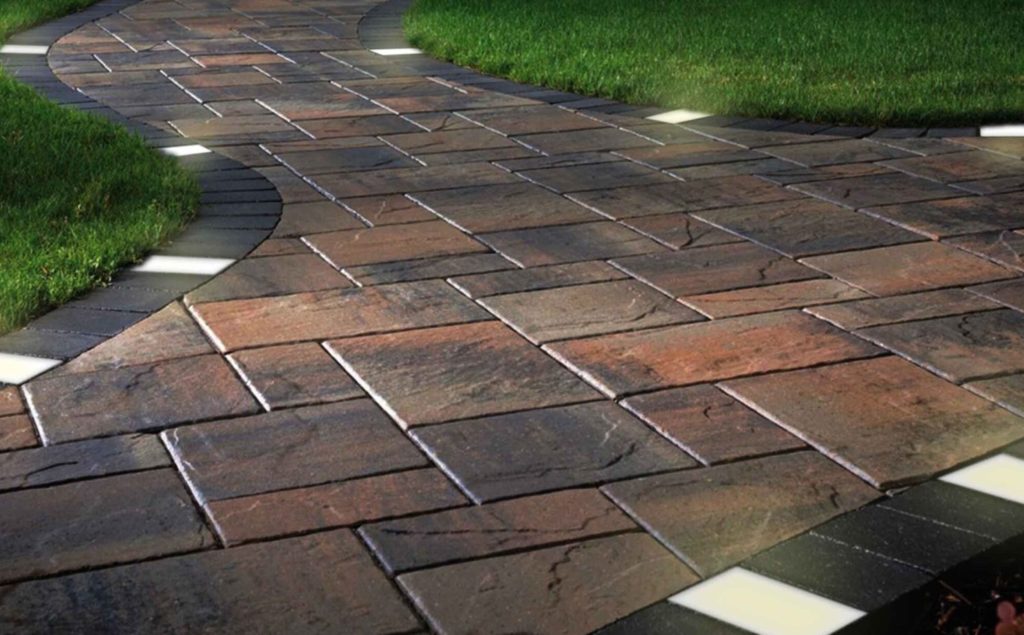
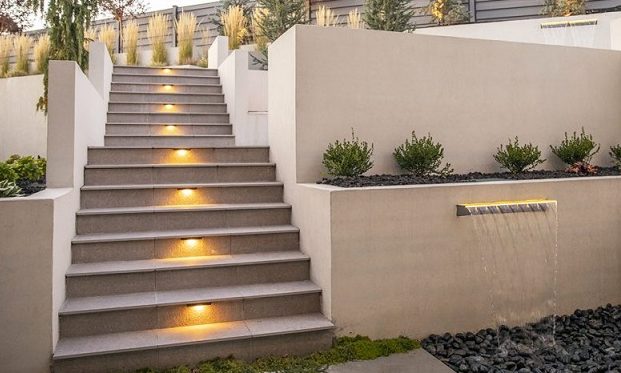
Fixture selection
Opt for LED lighting for their efficiency and durability. Compared to incandescent and halogen bulbs, they last longer with over 20,000 hours of operation.
Most stonework can be illuminated with a warm color temperature (~3000K) to bring out their warm colors. On the same note, pay attention to the light intensity which you will see as the brightness level and beam angle.
Wash lighting provides a soft glow suitable for washing a concrete surface. Bullet and medium-wide lamps project a narrow to medium beam for highlighting specific features and grazing walls to reveal details and texture.
Hardscape Lighting Ideas
Wall lighting:
These lights can be undercap, surface mounted, or inground. They are installed to draw attention to the wall’s texture, shape, and proportion.
Sitting wall lights are integrated into sitting wall capstones to highlight the texture and illuminate the paved surface below. This will require cutting a wire run under the capstone and installing conduits to run wire from below during installation.
Lengths of fixtures vary from 3 to 20 inches.
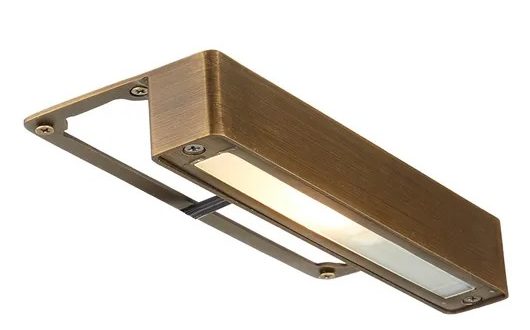

Step Lighting:
Step lighting not only enhances aesthetics but also ensures safe navigation. This can be done by integrating simple under-cap step lights, and surface-mounted or recessed tread lights into the riser of each step.


Outdoor Kitchens:
Popular placements include beneath countertops and along the bar, adding a touch of flair to the open-air chef’s domain.
Recessed in-ground lights can be used to graze stone walls and uplight columns. In Addition, downlights from the soffit or beams above can provide ample ambient and task lighting for culinary chores.


Pool Hardscapes:
Pool lights are recessed into the coping stone to provide soft illumination for a nighttime swim. Illuminating pool decking and surrounding hardscape improve safety and ambiance.
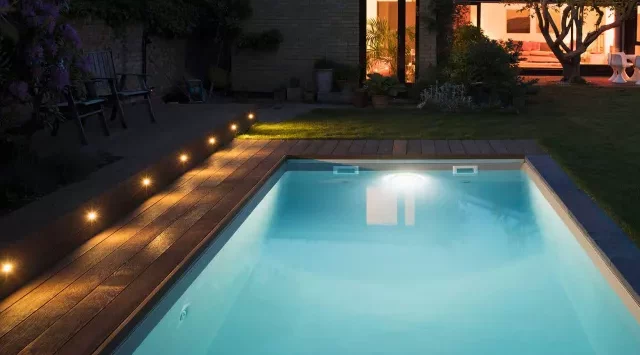
Pillar lights:
Options for pillar lighting include;
- Post lamps
- In-ground lighting,
- Under the cap lights

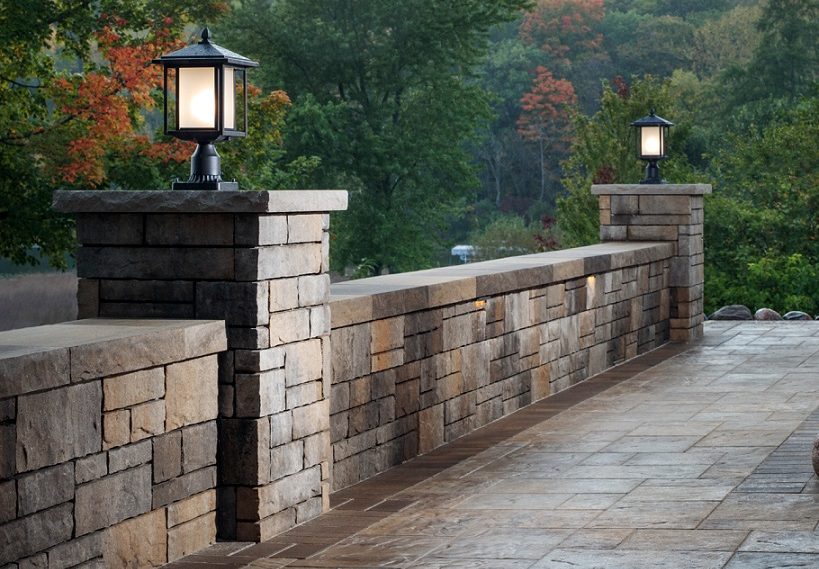
Light it Up
If you’re comfortable with wiring, cutting wire runs, and drilling a hardscape lighting project should be within your capabilities. This way you can elevate a mundane space for activities and pleasurable viewing.
However, it is best to plan and install the lighting during the construction phase. Collaborating with a skilled hardscape contractor is invaluable during these stages, ensuring seamless integration.

